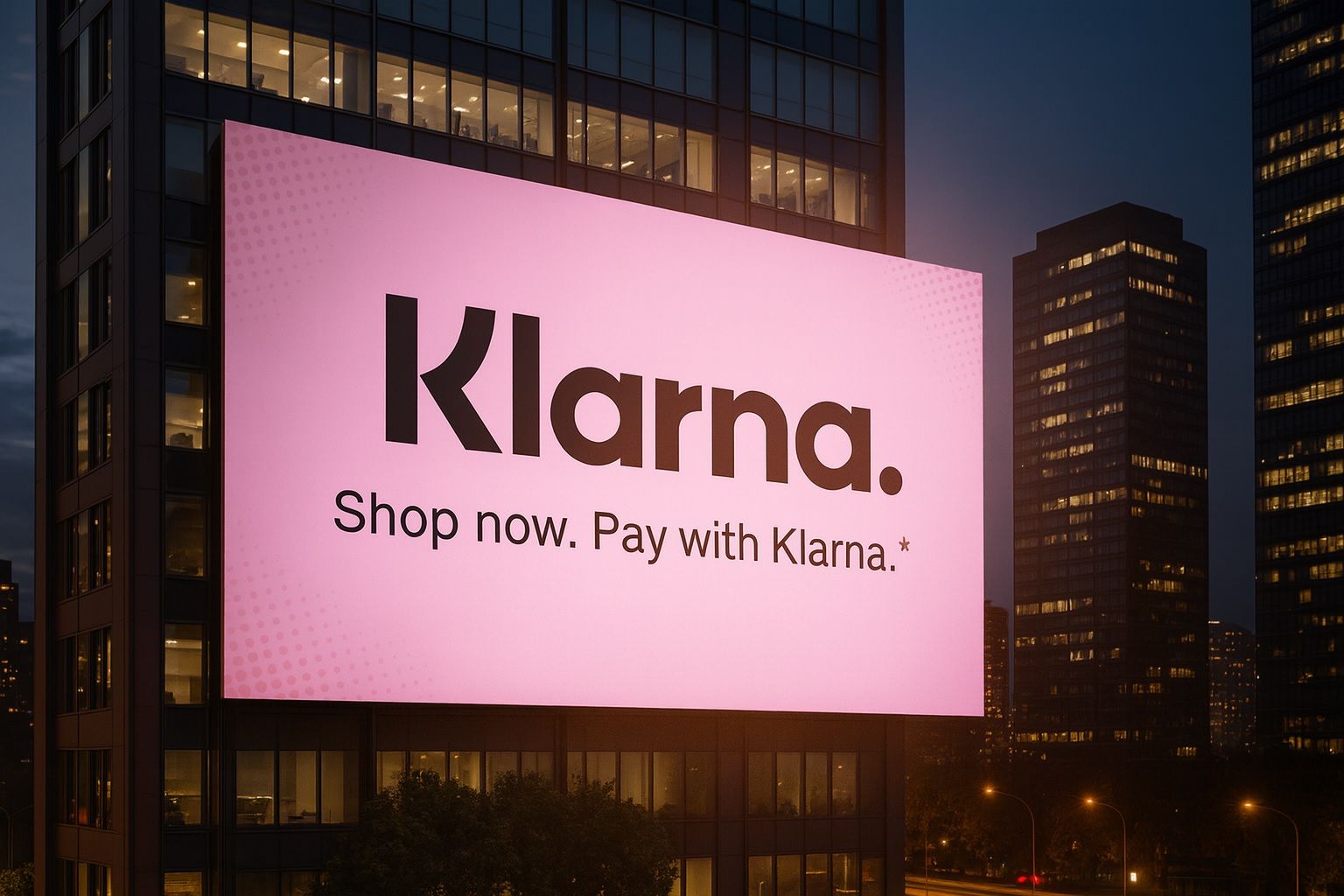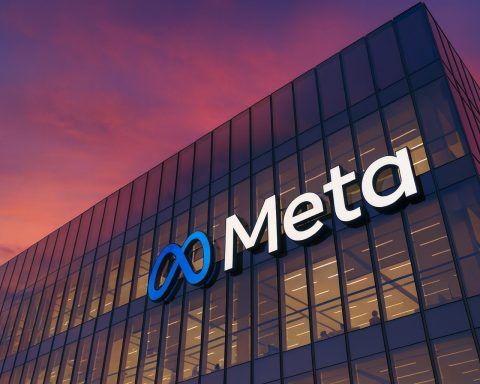Klarna’s first earnings report as a public company has landed – and it comes with both rapid growth and a bold new funding deal that could reshape the buy-now-pay-later (BNPL) lender’s US ambitions.
On Tuesday, Swedish fintech Klarna (NYSE: KLAR) reported a 26% year‑on‑year jump in Q3 2025 revenue to $903 million, beating analyst estimates and underscoring the strength of its US expansion. At the same time, the company unveiled a $6.5 billion loan‑sale agreement with Elliott Investment Management that will turbocharge growth in its longer‑term “Fair Financing” installment product in the United States. [1]
Key takeaways
- Revenue beats forecasts: Q3 2025 revenue rose 26% to $903 million, ahead of consensus expectations of roughly $882–$889 million. [2]
- Still loss‑making, but better than feared: Klarna posted a net loss of $95 million, versus a $12 million profit a year ago. On a per‑share basis, the loss (around –$0.25) came in slightly better than Wall Street forecasts of about –$0.26. [3]
- Guiding past the $1 billion mark: Management expects Q4 2025 revenue to exceed $1 billion, driven mainly by US growth and stronger demand for longer‑term financing. [4]
- New $6.5B Elliott deal: Investment funds managed by Elliott Investment Management will buy Klarna’s US “Fair Financing” loans through a $1 billion facility that is expected to support $6.5 billion of loan originations over two years. [5]
- Fair Financing is exploding: Klarna says Fair Financing gross merchandise volume (GMV) grew 139% globally and 244% in the US over the past year, capturing meaningful share of the US fixed‑term installment market. [6]
Klarna’s first post‑IPO quarter: strong top line, soft bottom line
This Q3 report is the first major test of investor confidence since Klarna’s high‑profile New York Stock Exchange debut in September.
According to Reuters, Klarna generated $903 million in revenue in the three months through September, versus $706 million in the same period of 2024, and ahead of the roughly $882 million analysts expected. [7]
However, the company swung back into the red, reporting a net loss of $95 million, compared with a $12 million profit a year earlier. [8] Market data providers estimate this translates to a loss of about $0.25 per share, slightly better than consensus forecasts of a $0.27 loss, suggesting Klarna is at least meeting expectations on profitability even as it invests in growth. [9]
The mixed picture — faster revenues but renewed losses — is central to how public markets will now judge Klarna: as a high‑growth fintech still in investment mode, rather than a fully mature, profit‑focused bank.
Earnings vs expectations: preview meets reality
Ahead of today’s report, research houses and financial media had set the tone:
- Revenue expectations: Analysts tracked by Visible Alpha and S&P Global Market Intelligence were looking for around $885–$889 million in revenue, implying about 26% year‑on‑year growth. [10]
- Profitability expectations: Forecasts pencilled in negative net margins and an EPS loss of roughly –$0.26 per share, with some research noting Klarna’s weak Altman Z‑Score and lingering balance sheet stress. [11]
In other words, Wall Street already expected a big top‑line quarter, but not a clean profit story. Klarna delivered more revenue than expected, with losses roughly in line or slightly better, which should ease some concerns about a sudden margin collapse even as the company leans into US growth and longer‑term credit.
That said, the return to losses after a profitable comparison period will keep the focus squarely on credit quality, funding costs, and underwriting discipline, especially as interest rates remain elevated and regulators scrutinize BNPL products more closely.
From ‘Pay in 4’ to ‘Fair Financing’: Klarna’s growth engine shifts gears
Klarna built its brand on short‑term, interest‑free “Pay in 4” plans. Today’s news makes clear that longer‑term installment loans are now a core growth pillar, particularly in the US.
What is Fair Financing?
Klarna’s Fair Financing (often presented under “Pay over time” or “Financing” in its marketing) is designed for larger‑ticket purchases — think electronics, furniture, travel or home projects — and generally lets customers spread payments over 6–24 months (and in some markets up to 36 months), with clearly disclosed interest and terms. [12]
On its own website, Klarna pitches this as “fair, flexible financing for large‑ticket items”, stressing transparency and the ability to repay early without penalty in many markets. [13]
Hypergrowth in US fixed‑term installments
In today’s press release, Klarna highlighted three striking data points: [14]
- Fair Financing GMV up 139% globally year‑on‑year
- Fair Financing GMV up 244% in the US
- The product is “taking significant market share” in the US fixed‑term installment market
Combined with Bloomberg’s observation that Klarna’s longer‑term loan book has more than doubled, this underlines how quickly the company is shifting from pure short‑term BNPL into classic installment lending at scale. [15]
This pivot helps Klarna grow revenue — longer‑term loans generally carry interest income, not just merchant fees — but it also raises the stakes on funding, capital, and credit risk management, which is where today’s Elliott deal comes in.
Inside the $6.5B Elliott Investment Management deal
Alongside the earnings report, Klarna announced that investment funds managed by Elliott Investment Management will purchase its US Fair Financing loans via a structured funding facility. [16]
How the structure works
According to Klarna’s regulatory news release:
- Elliott‑managed funds will buy a portion of Klarna’s existing US Fair Financing portfolio, plus newly originated receivables from October onwards, on a rolling basis.
- The underlying facility size is $1 billion, but as loans amortize and new ones enter the facility over a two‑year term, Klarna expects the structure to support about $6.5 billion of loan originations. [17]
- The arrangement is a forward‑flow / whole‑loan sale program — Elliott agrees in advance to purchase loans that Klarna originates. [18]
- Klarna keeps all consumer‑facing activities, including underwriting and servicing, while using Elliott’s capital to recycle its balance sheet and scale Fair Financing faster. [19]
Klarna describes the deal as providing “scalable, off‑balance‑sheet funding” that improves financial flexibility and long‑term capital efficiency, while allowing the company to recognize revenue on sold loans more quickly. [20]
In practical terms, Klarna is de‑risking and de‑leveraging its balance sheet, but not its business model: it still chooses which customers to approve and how to service them, but a large slice of the credit exposure is shifted to Elliott‑managed funds.
Market commentators note that this structure closely mirrors other fintech funding deals the firm has struck — and could be a template for additional regional or product‑specific partnerships if the US program performs well. [21]
Layered funding: how the Elliott deal fits Klarna’s broader capital strategy
The Elliott partnership is not happening in isolation. In August, Klarna announced a multi‑year forward‑flow agreement under which US servicer Nelnet can purchase up to $26 billion of “Pay in 4” loans over the life of the program. [22]
Taken together:
- The Nelnet deal supports Klarna’s short‑term, interest‑free Pay in 4 receivables.
- The Elliott deal supports longer‑duration, interest‑bearing Fair Financing loans.
This “barbell” funding approach gives Klarna more flexibility to:
- Scale volume without bloating its balance sheet,
- Smooth earnings volatility by locking in predictable funding economics, and
- Reallocate internal capital to technology, AI, and new markets instead of tying it up in loans.
For investors worried about Klarna’s prior periods of heavy losses and high funding needs, this is a clear signal that the company is leaning on capital markets partners, rather than its own equity, to finance loan growth.
Klarna stock (KLAR): from hot IPO to earnings reality
Klarna listed on the NYSE in September at $40 per share, raising about $1.37 billion and initially surged to around $52 in its trading debut, a roughly 30% premium to the IPO price. [23]
Since then, however, shares have given back a chunk of that early pop. Recent historical data show the stock closing at $34.27 on 14 November 2025, well below its opening trade but still above crisis‑era private valuations. [24] Barron’s notes that Klarna’s share price had “tumbled” from its debut levels even before today’s earnings, reflecting investor caution around BNPL economics and competition. [25]
Early reaction to the Elliott deal and the earnings beat has been muted but not alarmed: one trading‑desk summary cited pre‑market moves of roughly –0.3% in KLAR, with retail sentiment on social investing platforms skewing cautiously bullish. [26]
For stockholders, the new information boils down to:
- Growth story intact – Klarna is beating revenue estimates and guiding to >$1B in Q4. [27]
- Profitability still a work in progress – losses have re‑appeared, and funding deals don’t eliminate credit risk. [28]
- Balance sheet strategy clearer – the combination of Nelnet + Elliott reduces balance sheet intensity and may justify a higher growth multiple if credit performance holds up. [29]
What today means for the BNPL and consumer‑credit landscape
Klarna’s moves today highlight broader shifts happening across BNPL and consumer finance:
- BNPL is becoming more like traditional installment credit
The surge in Fair Financing and the focus on loans up to 24–36 months blur the line between BNPL and classic point‑of‑sale financing offered by banks and card issuers. [30] - Off‑balance‑sheet funding is the new normal for high‑growth lenders
Large forward‑flow deals with institutional investors are increasingly standard for fintechs that want to grow fast without over‑levering their own balance sheets. Klarna’s $26B Nelnet program for Pay in 4 and today’s $6.5B Elliott facility are prime examples. [31] - Regulatory scrutiny will stay front and center
With US regulators already watching BNPL providers closely, Klarna’s expanded US footprint in longer‑term loans will likely draw renewed regulatory and political interest, especially around affordability checks, transparency of terms, and data usage. [32] - Competition with Affirm, PayPal, and card issuers is intensifying
Comparisons with rival providers show similar moves toward multi‑year financing plans, higher‑value purchases, and deeper merchant integrations, suggesting the race is shifting from pure growth to profitable, well‑funded growth. [33]
What to watch on today’s earnings call
Klarna will host its first earnings call as a public company at 8:30 a.m. ET, and in partnership with Say Technologies has invited verified shareholders to submit and upvote questions for CEO Sebastian Siemiatkowski and CFO Niclas Neglén. [34]
Key issues investors are likely to focus on:
- Path to sustainable profitability
- How quickly can Klarna return to consistent quarterly profits?
- What is management’s target timeline and margin profile?
- Credit performance in Fair Financing
- What are delinquency and charge‑off trends in longer‑term loans?
- How are underwriting models adapting to a more credit‑heavy mix?
- Funding costs and capital efficiency
- What are the economics of the Elliott facility versus prior funding structures?
- Could similar deals be expanded to Europe or other product lines?
- Regulation and compliance
- How is Klarna preparing for potential BNPL regulation in the US and EU?
- Will Fair Financing be treated differently from “Pay in 4” by regulators?
- AI and operating leverage
- After earlier heavy use of AI for cost‑cutting and customer service, how is Klarna now using AI to drive revenue growth and risk management? [35]
The answers to these questions will shape whether today’s combination of earnings beat + strategic funding deal is seen as the start of a new, more sustainable growth chapter — or simply the next leg in a still‑volatile fintech story.
References
1. www.reuters.com, 2. www.reuters.com, 3. www.reuters.com, 4. www.tradingview.com, 5. www.businesswire.com, 6. www.businesswire.com, 7. www.reuters.com, 8. www.reuters.com, 9. www.marketscreener.com, 10. www.spglobal.com, 11. www.gurufocus.com, 12. www.klarna.com, 13. www.klarna.com, 14. www.businesswire.com, 15. www.bloomberg.com, 16. www.businesswire.com, 17. www.businesswire.com, 18. www.bloomberg.com, 19. www.businesswire.com, 20. www.businesswire.com, 21. www.stocktitan.net, 22. investors.klarna.com, 23. www.reuters.com, 24. www.nasdaq.com, 25. www.barrons.com, 26. stocktwits.com, 27. www.reuters.com, 28. www.reuters.com, 29. www.businesswire.com, 30. www.klarna.com, 31. investors.klarna.com, 32. www.lendingtree.com, 33. www.chargeflow.io, 34. www.businesswire.com, 35. www.reuters.com









